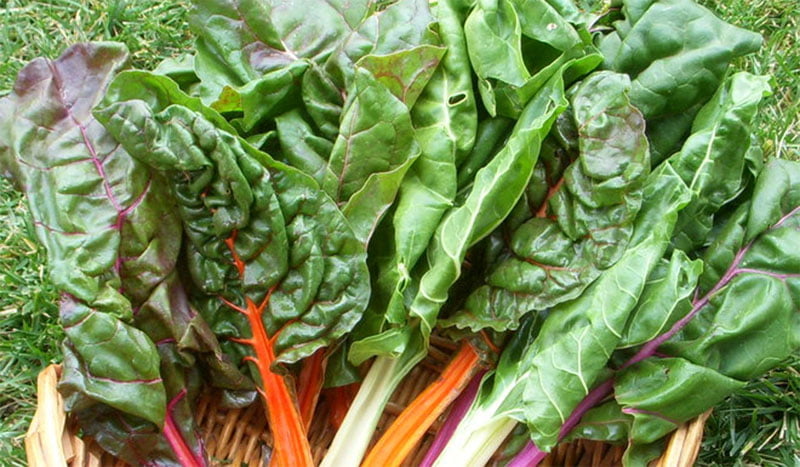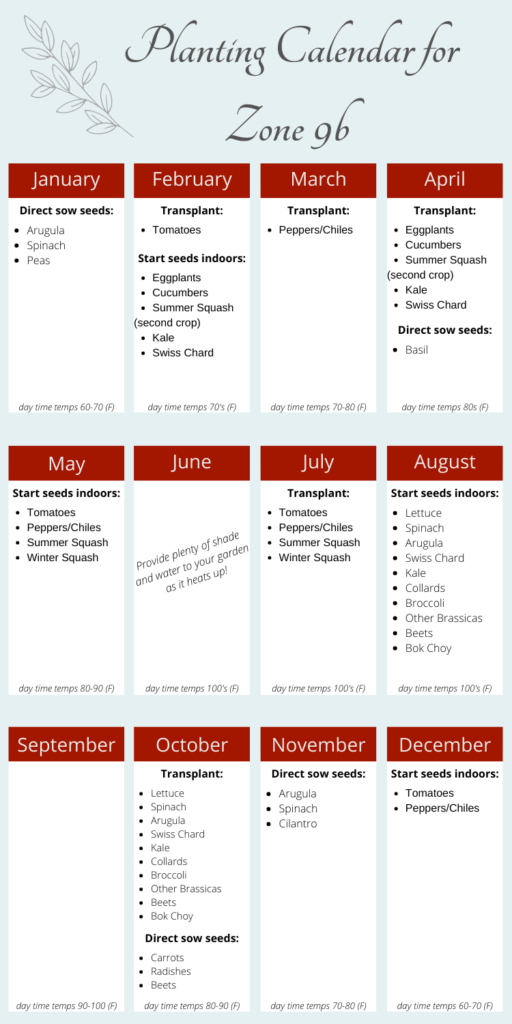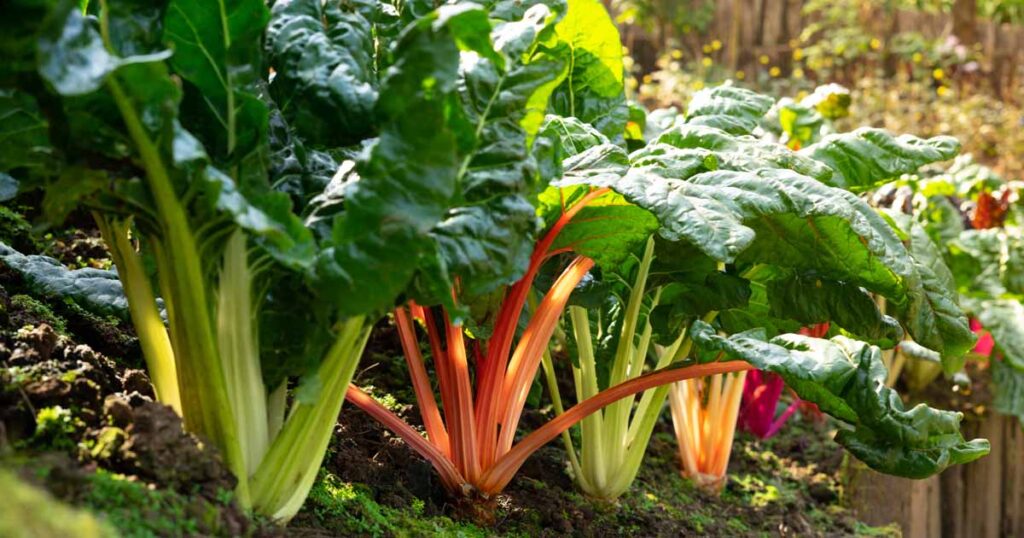So you’re a gardening enthusiast living in Zone 9 and wondering when is the best time to plant Swiss chard? Well, you’re in luck! In this article, we’ll be discussing the ideal planting time for this nutritious leafy green specifically tailored for Zone 9’s climate. Whether you’re a seasoned gardener or just starting out, understanding the optimal planting window will ensure your Swiss chard thrives and yields a bountiful harvest. So grab your gardening gloves and let’s get planting!

Factors to Consider
Climate
When it comes to planting Swiss chard, one of the most important factors to consider is the climate of your region. Swiss chard is a cool-season vegetable, so it thrives in mild temperatures. It doesn’t do well in extreme heat or cold, so you should choose a time to plant when the climate is more moderate.
Soil Temperature
Another crucial factor to consider is the soil temperature. Swiss chard seeds germinate best in soil temperatures between 50-85°F (10-29°C). It’s important to make sure that the soil has warmed up enough before planting the seeds, as colder temperatures can hinder germination.
Frost Dates
Knowing the average frost dates in your area is essential when planning to plant Swiss chard. This vegetable is quite hardy and can tolerate light frosts, but severe frosts can damage or kill the plants. Avoid planting Swiss chard too early in the spring or too late in the fall to prevent any potential frost damage.
Sunlight Requirements
Swiss chard is a sun-loving plant, so it needs plenty of sunlight to grow and thrive. It requires at least six hours of direct sunlight daily to develop properly. Ensure that you choose a planting location that receives adequate sunlight throughout the day.
Rainfall
Just like any other plant, Swiss chard requires water to grow. However, excessive rainfall can cause issues such as waterlogging and rotting of the roots. It’s important to strike a balance and ensure that the soil is well-drained but still retains enough moisture for the plants to flourish. Monitoring the rainfall patterns in your area can help you determine the best time to plant Swiss chard.
Growing Season
Understanding the length of the growing season in your region is crucial for successfully growing Swiss chard. This vegetable typically takes around 50-60 days to mature, but it can be harvested at various stages of growth. Knowing the approximate duration of your growing season will help you plan when to sow the seeds or transplant seedlings to maximize your harvest.
Planting Swiss Chard Seeds
Preparing the Soil
Before planting Swiss chard seeds, it’s important to prepare the soil properly. Swiss chard prefers well-draining soil that is rich in organic matter. Start by removing any weeds or rocks from the planting area. Loosen the soil using a garden fork or tiller to improve its texture and allow for better water and nutrient penetration. Adding compost or well-rotted manure will help enrich the soil and provide essential nutrients for the developing plants.
Seeding
When it comes to seeding Swiss chard, it’s recommended to sow the seeds directly into the ground. Plant the seeds ½ to 1 inch deep, spacing them 2-3 inches apart in rows that are 12-18 inches apart. Cover the seeds with soil and gently pat it down to ensure good seed-to-soil contact.
Watering
After sowing the Swiss chard seeds, give the planting area a thorough watering. Keep the soil moist but not waterlogged throughout the germination period, which usually takes around 7-14 days. Providing consistent moisture during this stage is crucial for seedling establishment.
Thinning
Once the Swiss chard seedlings have emerged and grown a few inches tall, thinning is necessary to provide enough space for the remaining plants to grow. Thin the seedlings to a spacing of 6-10 inches apart. The thinned seedlings can be enjoyed as a tasty addition to salads or used in other culinary creations.
Mulching
To help retain soil moisture, suppress weed growth, and maintain more even soil temperatures, consider applying a layer of organic mulch around the Swiss chard plants. Suitable options include straw, hay, or chopped leaves. Mulching also helps to prevent soil erosion and keeps the roots protected during extreme weather conditions.

Planting Swiss Chard Seedlings
Transplanting Seedlings
If you prefer to start Swiss chard indoors or purchase seedlings from a nursery, transplanting the seedlings into the garden is a great option. Wait until the seedlings have developed a strong root system and are around 3-4 inches tall before transplanting them. Dig holes that are slightly larger than the root ball of the seedlings and space them 6-10 inches apart. Gently place the seedlings in the holes and backfill with soil, ensuring that the seedlings are at the same depth as they were in their containers.
Watering
After transplanting the Swiss chard seedlings, water them thoroughly to help them settle into their new environment. Ensure that the soil around the seedlings remains consistently moist but not waterlogged until they become established.
Spacing
Proper spacing is essential when planting Swiss chard seedlings. The recommended spacing between plants is 6-10 inches, allowing enough room for each plant to grow and receive adequate sunlight and airflow. Providing enough space between plants also helps prevent the spread of diseases and promotes healthy growth.
Mulching
To further aid in moisture retention, weed suppression, and temperature regulation, apply a layer of organic mulch around the Swiss chard seedlings. Mulching also helps to discourage weed growth, reducing competition for resources.
Best Months to Plant Swiss Chard
Early Spring
In Zone 9, the best time to plant Swiss chard in the early spring is typically around February or March. At this time, the soil temperature is beginning to warm up, and the risk of severe frosts is decreasing. By planting in early spring, you can take advantage of the mild temperatures and longer daylight hours, allowing your Swiss chard to establish and grow before the heat of summer.
Late Spring
If you missed the window for planting Swiss chard in early spring, you can still plant it in the late spring. Late April or May is an ideal time for planting in Zone 9. The soil has warmed up significantly by this point, and there is a reduced chance of frost. Planting in late spring allows your Swiss chard to benefit from the warm weather without being exposed to extreme heat.
Early Fall
Another suitable time to plant Swiss chard in Zone 9 is during the early fall, around August or September. By planting in early fall, you can take advantage of the cooler temperatures and increased rainfall. This allows the Swiss chard to establish strong roots before the colder winter months arrive, ensuring a bountiful harvest.
Late Fall
For those in Zone 9, planting Swiss chard in the late fall can also be successful. Typically, late October or November is the ideal time. The soil remains warm enough for germination, but the cooler temperatures reduce the risk of heat stress. Planting in late fall allows your Swiss chard to overwinter and be ready for early spring harvest.

Additional Tips for Planting Swiss Chard
Succession Planting
To enjoy a continuous harvest of Swiss chard throughout the growing season, consider succession planting. This involves planting new batches of Swiss chard seeds or seedlings every few weeks. By staggering your plantings, you can ensure a fresh supply of this tasty green vegetable for your culinary endeavors.
Companion Planting
Companion planting is another technique you can employ when planting Swiss chard. It involves growing compatible plants in close proximity to maximize yields and deter pests. Good companions for Swiss chard include beans, cabbage, cucumbers, onions, and lettuce. Avoid planting Swiss chard near plants such as tomatoes or corn, as they may compete for resources or attract similar pests.
Crop Rotation
To prevent the buildup of pests and diseases in the soil, practice crop rotation when planting Swiss chard. Avoid planting it in the same location where you grew other leafy greens, such as spinach or lettuce, in the previous year. Rotating your crops helps break the life cycle of pests and reduces the risk of soil-borne diseases.
Disease Prevention
Swiss chard is generally a resilient and low-maintenance plant. However, it can be susceptible to diseases such as leaf spot or downy mildew. To prevent these issues, ensure proper spacing between plants to promote airflow and reduce humidity around the leaves. Regularly inspect the plants for any signs of disease and promptly remove any affected leaves. Watering at the base of the plants rather than overhead can also help prevent the spread of such diseases.
Harvesting Swiss Chard
Baby Leaves
Swiss chard is known for its versatile harvest options. One option is to harvest the young, tender leaves, often referred to as baby leaves. These can be harvested when they reach about 4-6 inches in height. Simply snip off the outer leaves with clean gardening shears, leaving the inner leaves to continue growing and producing more foliage.
Mature Leaves
If you prefer larger leaves, allow your Swiss chard plants to mature. Mature leaves are generally harvested when they are around 8-10 inches in height. Similar to harvesting baby leaves, snip off the outer leaves and leave the inner leaves to grow. Regular harvesting ensures a continuous supply of fresh Swiss chard throughout the growing season.
Cut-and-Come-Again Harvesting
For a more sustainable and continuous harvest, utilize the cut-and-come-again method. With this method, instead of removing individual leaves, you can cut the entire plant down to about 2 inches above the soil level. Within a short time, new leaves will begin to sprout, allowing for multiple harvests from the same plant.

Conclusion
By considering the various factors such as climate, soil temperature, frost dates, sunlight requirements, rainfall, and growing season, you can ensure successful Swiss chard planting in Zone 9. Whether you choose to sow seeds directly or transplant seedlings, proper preparation of the soil, adequate watering, thinning, and mulching are all important steps to help your Swiss chard plants thrive. Additionally, knowing the best months to plant, practicing succession planting, utilizing companion planting and crop rotation, and implementing disease prevention techniques will contribute to a bountiful Swiss chard harvest. Whether harvesting baby leaves or mature foliage, Swiss chard offers both versatility and deliciousness in your culinary adventures.



